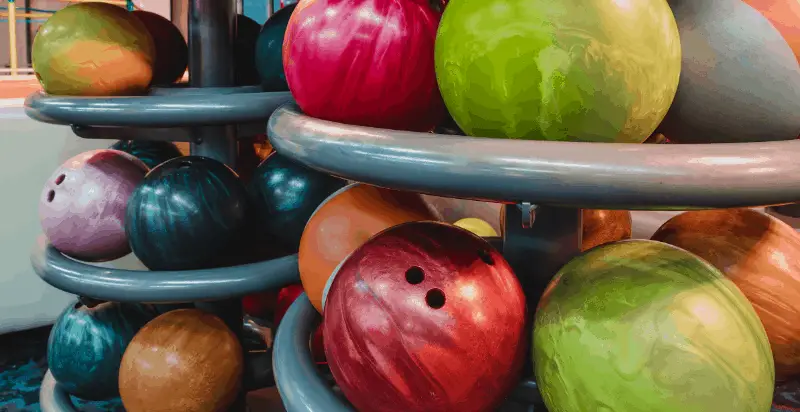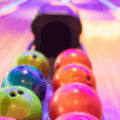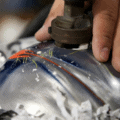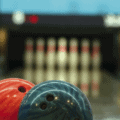Bowling is a game with many fans, but you can’t bowl without a decent bowling ball.
When you walk into a bowling arena for the very first time you see lots of very similar looking balls, that to look at, may seem to only differ in their color. And then, when you try to pick them up, you discover they differ in weight too.
However, let’s be frank, not all bowling balls are created equal and how they are constructed has significant implications for how they perform in the game.
And whilst anyone can see that a heavier bowling ball has better potential to knock the pins down, rather than merely making them wobble, it’s a little less obvious about what the outer materials of the bowling ball can offer for the best roll down the lane.
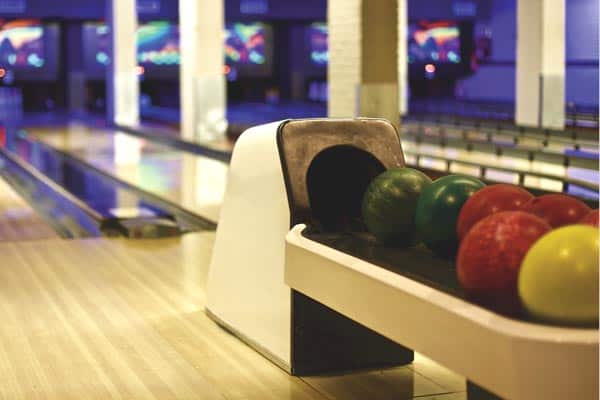
Bowling balls have widely different construction and build despite their sometimes generic appearance. And it’s not just the outer layer that’s different about them, oh no. Even their cores can be shaped differently.
So now, we’ll take a brief walk down the bowling memory lane, and see just how much bowling balls have changed over recent years. Then we’ll take a look at what makes up bowling balls today, before actually applying this knowledge into choosing the best bowling ball for you.
How bowling balls have changed
Bowling may feel very much like an age old game due to it’s sheer simplicity - roll the ball and knock down as many balls as you can.
However it wasn’t until some basic standardization of the game took place about 100 or so years ago that manufacturers started giving more thought to how they should best make their bowling balls.
In the beginning, bowling balls were made from wood,and then in the early 1900s, bowling balls were constructed of hard rubber. And even after the advent of plastic polyester bowling balls in around 1960, hard rubber bowling balls dominated the market right up until the 1970s.
But this changed forever in the 1980s when polyurethane balls (also referred to as urethane balls) were invented. These urethane balls were shown to develop more friction as they roll compared to their polyester counterparts, and this held more possibilities for the game, in terms of the hooks that can make the ball appear to curve when at first it seemed to be rolling straight.
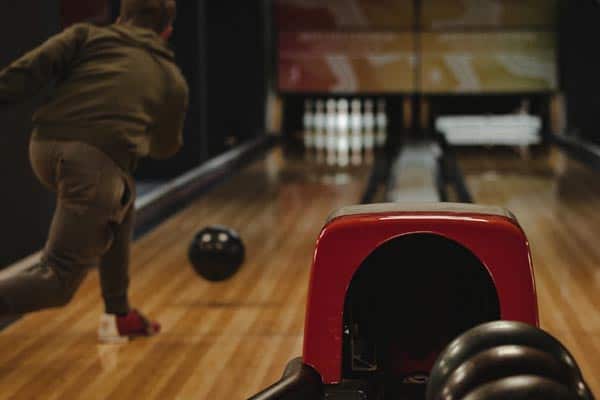
The friction in the ball’s motion comes down largely to its outer layer, known as the coverstock. More on that shortly.
The bowling world was shook up yet again in the early 1990s with the advent of reactive resin balls. These are basically urethane balls with additives in the surface designed to create microscopic oil-absorbing pores that increase the ball’s tackiness. And this in turn gives the ball more traction.
It is the bowling ball’s traction that determines the skid length distance the ball travels before entering the hook phase of ball motion. So, the advent of reactive bowling balls was great news for learners in the game. You try to roll it straight down the middle, it seems to gravitate to one side, and then just before it goes into gutter by the pins, it hooks in the other direction, and knocks the pins down!
Since then bowling ball manufacturers have toyed around with all sorts of different types of material, including even glass and ceramics!
Parts of a bowling ball
Did you know that bowling balls aren’t usually symmetrical inside?
In order to accommodate the drilled holes for your thumb and fingers in the bowling ball, the weight of the ball needs to be asymmetrical to compensate.
Inside each bowling ball is a weight block, also as known as a core, and this is where the bulk of the ball’s weight is distributed.
The outer edge of the ball, as I touched upon earlier, is called the coverstock. And in between the core weight block and the coverstock is filler material.
When bowling balls with drilled holes first came into play, the weight block was usually positioned as a thin puddle at the opposite end of the drill holes, and it became known as a pancake weight block.
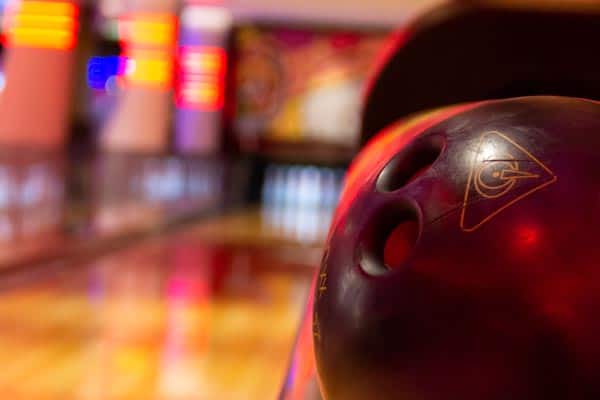
The weight block has a higher density than the filler material and the positioning of a pancake weight block in this way caused one half of the ball to weigh a few ounces more than the other half.
So manufacturers experimented, and someone had a lightbulb moment, and they came up with a new shape for the weight block - the lightbulb.
This is a more dynamic configuration, which allows the ball to build up momentum at different paces. Which means, in other words, that you can achieve a greater hook when you need the ball to curve and knock down those pins.
Nowadays you can get weight blocks in all sorts of shapes, but the lightbulb still remains popular to this day.
Different types of bowling balls around today
We’ve now looked at the inside of the ball in some detail, but what separates the bowling balls of today is their coverstock.
There are 4 main types of coverstock, Plastic, Urethane, Reactive Resin, and Particle (Proactive).
Plastic/Polyester
Polyester bowling balls are the least aggressive balls on the market today. And they have the least hook potential. This is because they create less friction with the lane, due to being that much harder and less porous.
That said they can be quite popular as an entry level bowling ball because they’re relatively low cost and are quite easy to control.
Plastic coverstocks can come in particularly handy when you need to knock down spares, because spares are often best taken down with a straight ball rather than with a hook.
Urethane
Urethane balls are also a good entry level bowling ball. Unlike their plastic counterparts however, they are best suited for bowlers who like to throw a hook ball.
In terms of their hook performance, a urethane bowling ball lands somewhat midway between polyester bowling balls and reactive resin ones. And their on-lane motion is quite easy to predict.
They tend to be a little more expensive than their plastic counterparts, but are still available at reasonable prices.
Despite being around since the 1980s, and the advent of newer technology in bowling balls, urethane balls are still quite popular to this day, and most manufacturers will supply them. Even top level players use them, particularly those with high rev rates.
Reactive Resin
It was the invention of Reactive Resin bowling balls that triggered the movement to more highly aggressive coverstocks. As we touched upon earlier, this coverstock has special additives which work to increase the ball’s tackiness, which in turn leads to more traction and a stronger back end reaction on the lane.
With a reactive resin ball in play, you get increased entry angle into the pocket, and improved pin carry.
Reactive coverstocks provide the widest range of ball motion capabilities, and it’s probably for this reason that they’re the most popular and widely sold.
There are 3 main types of reactive resin coverstock, namely reactive solid, reactive pearl, and reactive hybrid.
The solid variety is the more even rolling of the three, thanks to its greater amount of microscopic reactive pores on the ball surface. This way they produce a bit more friction and create a smoother back end reaction.
Solid reactive coverstock can come in a range of different finishes from polished through to sanded.
Pearl reactive coverstock meanwhile features the addition of mica material into the ball’s surface. This doesn’t just help make it look pretty, but it allows the ball to react quickly to the high friction back-end of the lane.
Hybrid reactive coverstock, as the name suggests, are a combination of solid and pearl reactive covers. They tend to be favored by serious players since they offer the mid-lane reaction of a solid coverstock, but with the back end reaction of a pearl coverstock
Particle
Particle coverstocks are pretty much like reactive resin bowling balls, but with one significant difference. There are microscopic pieces of material present that are designed to reach through the oily conditioner on the bowling lane to make a more responsive contact with the lane surface.
So, now you know about the different types of bowling balls, let’s get down to the nitty gritty, and talk about how to choose your bowling ball.
How to choose your bowling ball
To be honest, which type of bowling ball you need largely comes down to it’s overall weight, and how straight you roll the ball.
If you always manage to hit the pins straight down the middle, then just about any bowling ball should work for you just fine. If however, you usually need the bowling ball to hook a little at the end, then you’ll need a ball with more traction, and with a more dynamic core configuration.
If you’re a beginner or improver then a polyester or urethane bowling ball would make a great starting point, and when you’re ready to work more on your hooks and you want to try out something more aggressive, then you could try a reactive resin or even a particle ball.
Happy bowling!
[no_toc]

I’m Lia and I love playing games. I started this site to share things with friends and they encouraged me to post more and now I’m trying to share things with the world – indoor and outdoor sports, and board and bar games. I write about things like Bocce, Croquet, Billiards, Darts and other fun ways to enjoy time with your friends and family!

